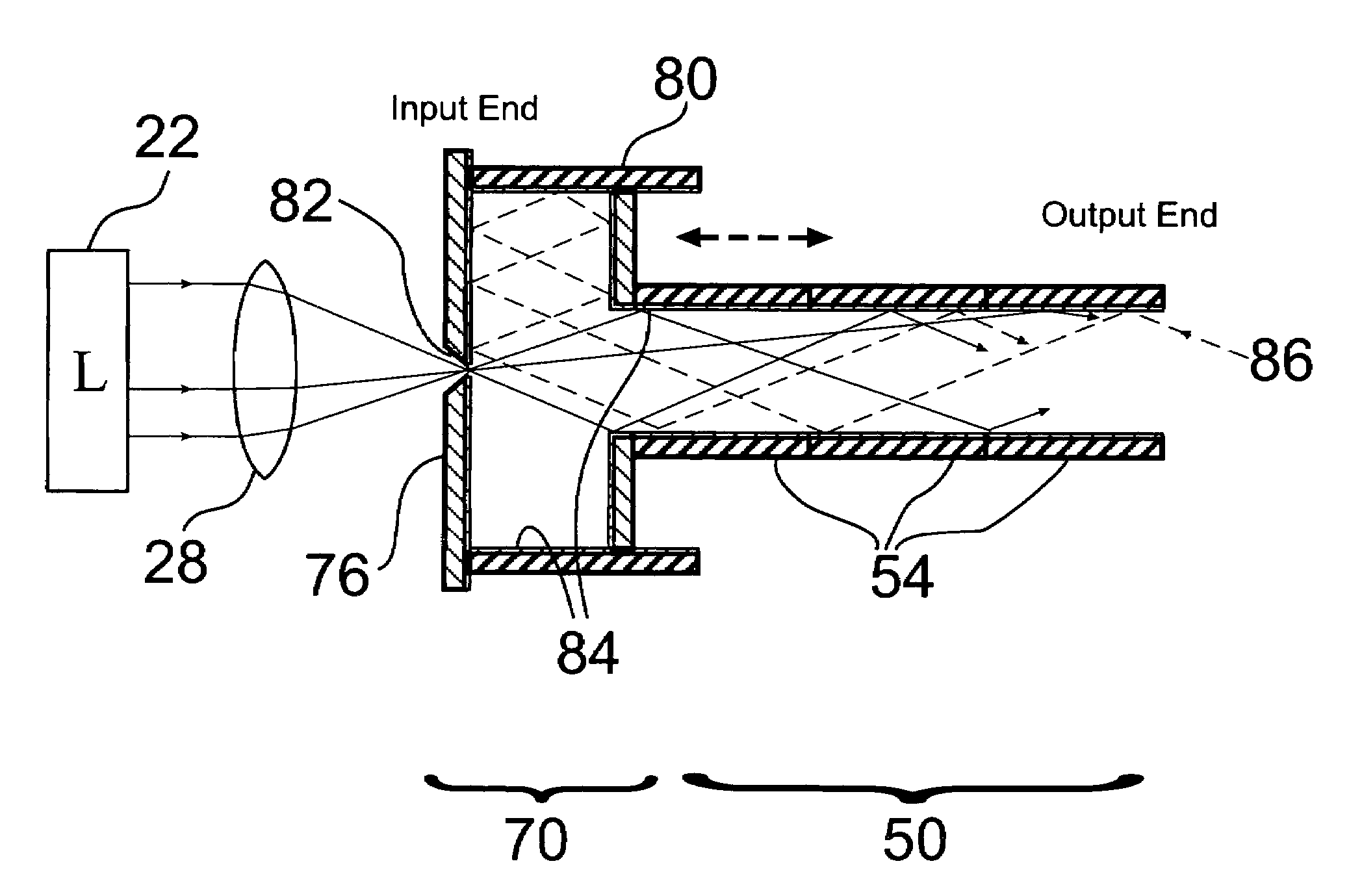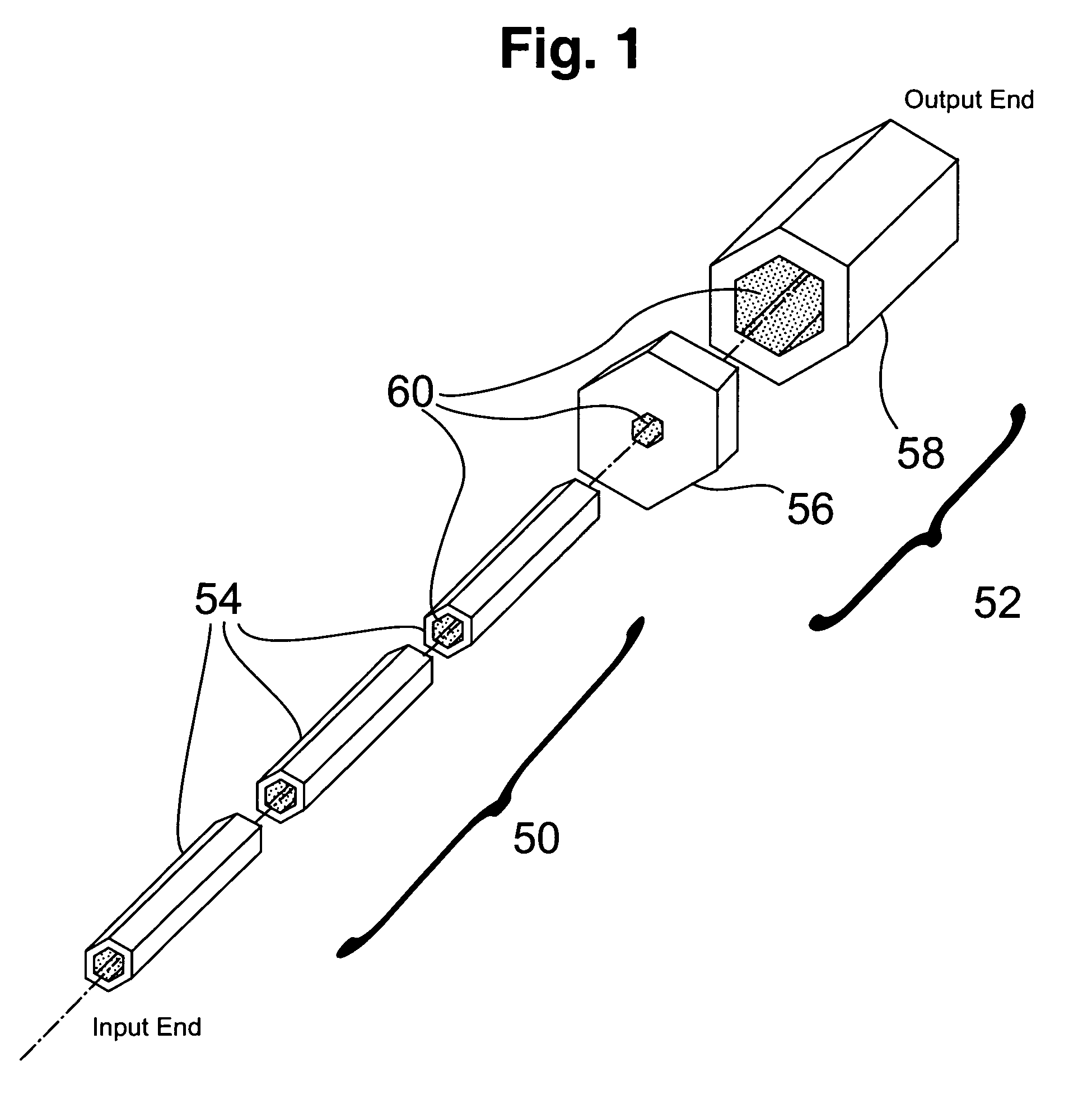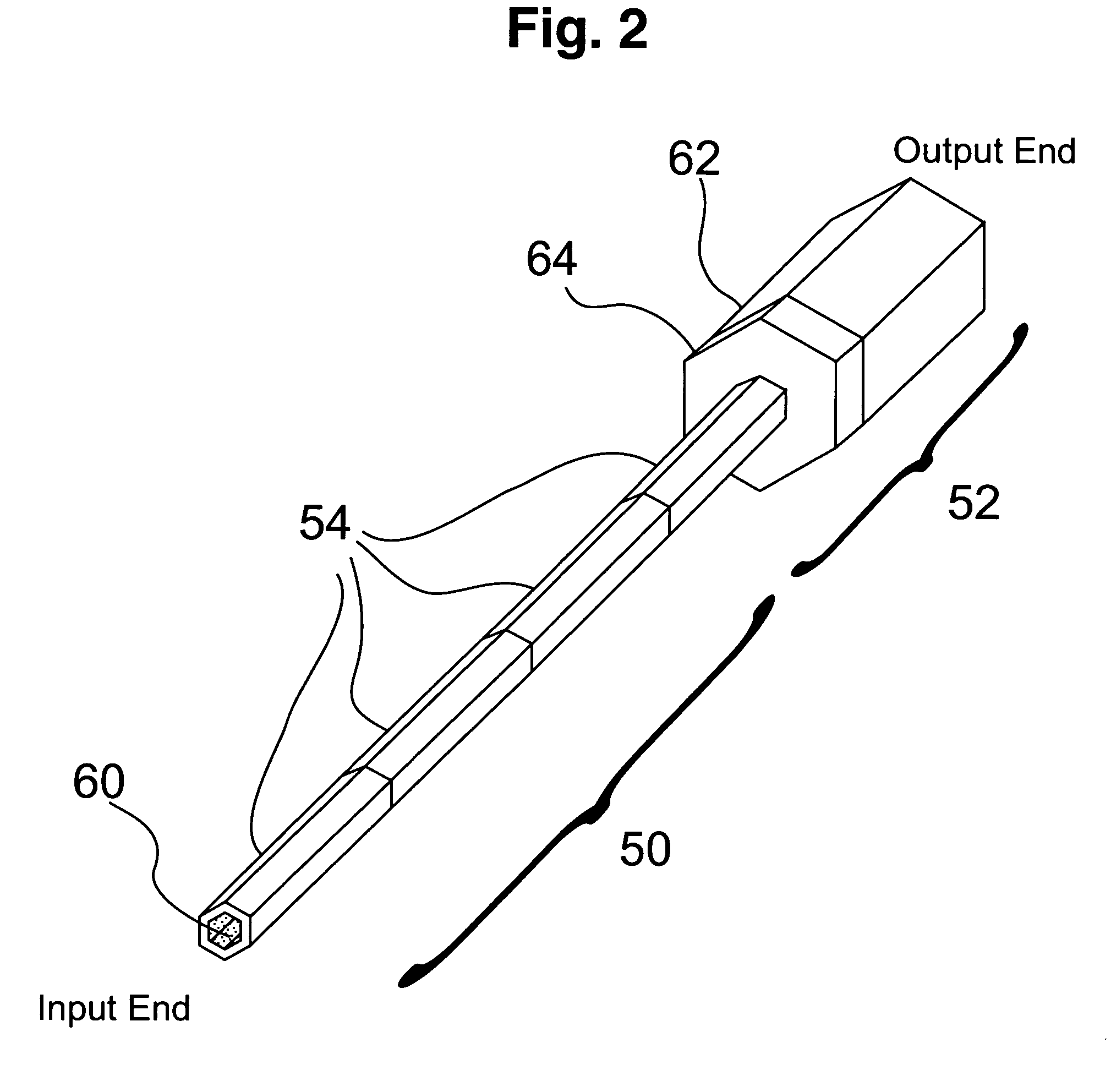Illumination system optimized for throughput and manufacturability
a technology of illumination system and throughput, applied in the field of imaging system, can solve the problems of increasing the cost of the illumination system, and achieve the effect of increasing the ratio of the area of the recycling mirror, increasing the recycling efficiency, and fast construction
- Summary
- Abstract
- Description
- Claims
- Application Information
AI Technical Summary
Benefits of technology
Problems solved by technology
Method used
Image
Examples
Embodiment Construction
Homogenizer with Energy Recycling
[0036]The high-efficiency energy-recycling system is schematically illustrated in FIG. 11 as part of an illumination system optimized for resist exposure, photoablation, or crystallization. The patterning mask 10 and substrate 12 are rigidly held on a planar scanning stage 14. A projection lens 16, in conjunction with a fold mirror 18 and reversing unit 20, forms the image of a portion of the mask 10 on the substrate 12. The stage 14 is scanned in a serpentine fashion, imaging the entire mask pattern onto the substrate 12.
[0037]A laser 22 provides the illumination for exposure. A lens system (26 and 28) shapes the output beam 24 of the laser, which is focused into the homogenizer 34. The homogenizer 34, which has a hexagonal cross-section, uniformizes the input beam, producing a hexagonal self-luminous radiation source at the output plane. A condenser lens assembly, comprising elements 40 and 42, images the output plane of the homogenizer 34 onto the...
PUM
 Login to View More
Login to View More Abstract
Description
Claims
Application Information
 Login to View More
Login to View More - R&D
- Intellectual Property
- Life Sciences
- Materials
- Tech Scout
- Unparalleled Data Quality
- Higher Quality Content
- 60% Fewer Hallucinations
Browse by: Latest US Patents, China's latest patents, Technical Efficacy Thesaurus, Application Domain, Technology Topic, Popular Technical Reports.
© 2025 PatSnap. All rights reserved.Legal|Privacy policy|Modern Slavery Act Transparency Statement|Sitemap|About US| Contact US: help@patsnap.com



